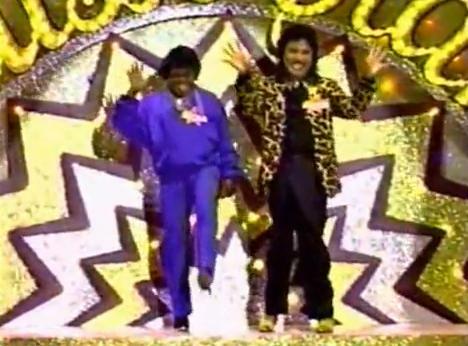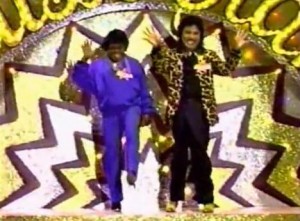Have been immersed lately in Preston Lauterbach’s The Chitlin’ Circuit, And the Road to Rock ‘n’ Roll. Yesterday afternoon, I grabbed it off the “new nonfiction” shelf and flipped through while the kids played on the Boyle County Library computers; kept reading last night; and woke up at 5 a.m. to stoke the wood stove and finish the book. It’s terrific. Can’t recommend it highly enough.
Google around for summaries and reviews. Robert Christgau has a good one here. I just wanted to share this excerpt, which was shocking and amazing to me, about the early days of Little Richard’s and James Brown’s careers, in and around Macon, Georgia. The two were close. Despite being upstaged dramatically one night by James and the Famous Flames (after which Richard conceded, “You’re the onliest man I’ve seen who has everything”), Richard’s career would be the first to take off, and led to Brown actually performing AS Little Richard!
Little Richard’s abrupt departure for the West Coast after the “Tutti Frutti” session left [Legendary Chitlin’ Circuit promoter Clint] Brantley with a problem, namely, unfulfilled bookings. So for a few weeks during the Fall of 1955 around Georgia, you could see James Brown as Little Richard, and Bobby Byrd as James Brown with the Flames. Brantley plugged James right into Richard’s gigs, touring with Richard’s Upsetters, traveling in a station wagon adorned with Richard’s name and song titles. James took it in stride, teasing about Richard’s magical ability to perform in two places at the same time. Emcee Luke Gonder worked the joke into his nightly introduction of the band on stage. After rattling through the lineup, he reached the star of the show.
“Ladies and gentlemen, the hardest-working man in show business today–Little Richard.”
— The Chitlin’ Circuit, And the Road to Rock ‘n’ Roll by Preston Lauterbach
Well, at least JB got a pretty good nickname out of his tribute band gig.
Later, apparently, as per Wikipedia, James again took Richard’s tour slots when the architect of rock n roll turned to preaching in 1957. Their careers were so intertwined, it’s sort of surprising that there are few images of them together. The screen capture of their appearance on Wheel of Fortune was the best Google Images could come up with….. which fact alone makes me want to smile and weep at the same time.

